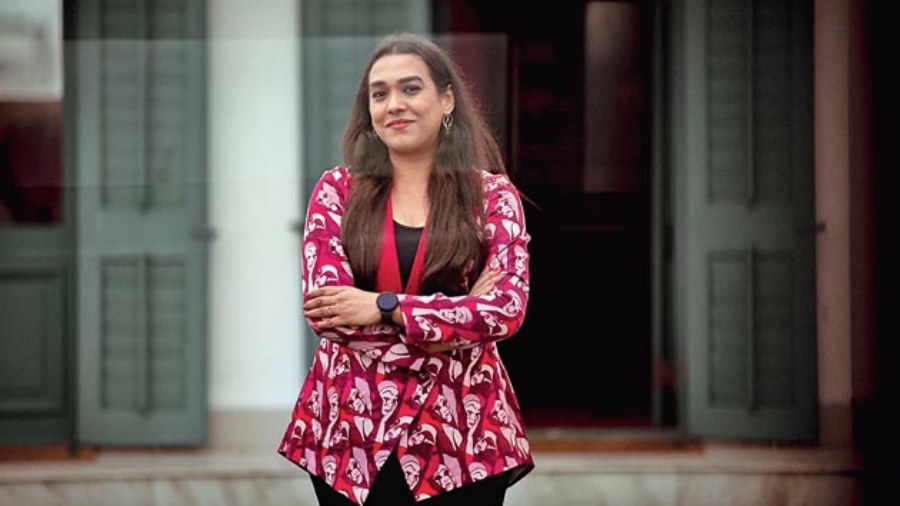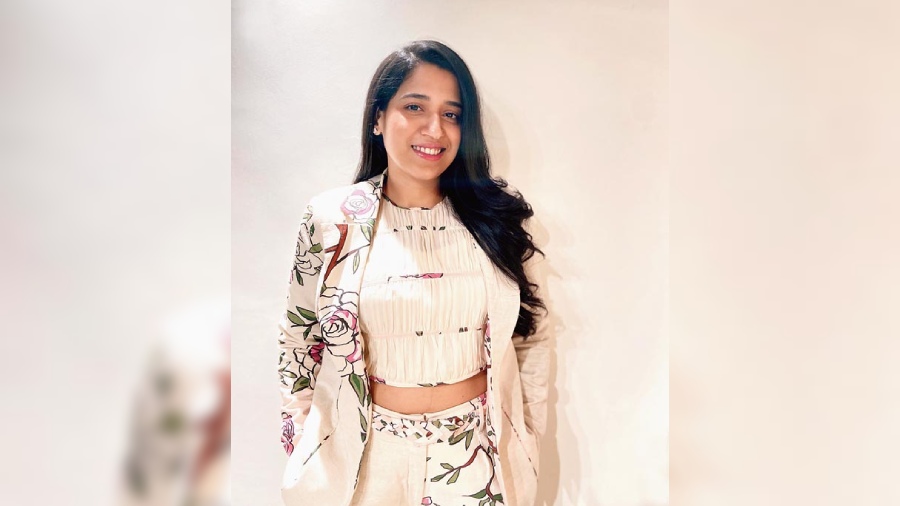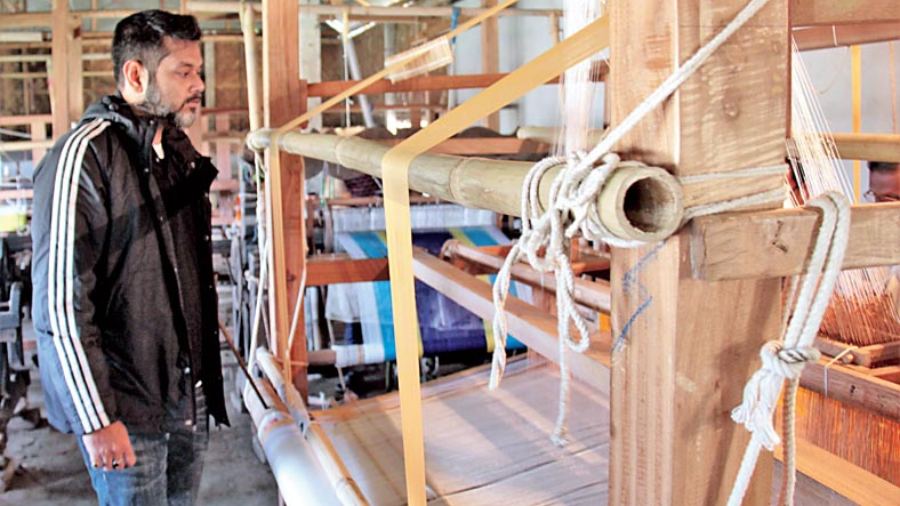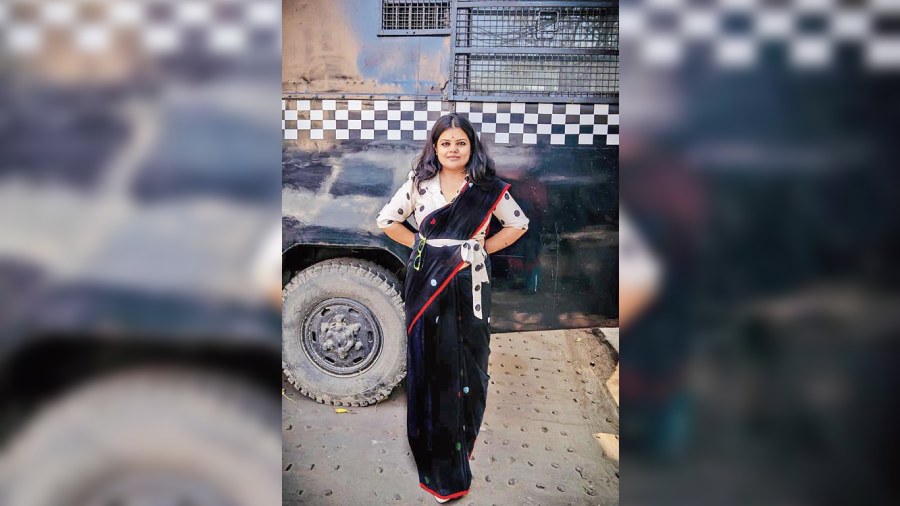AYUSHMAN MITRA
For me, it is the art of embroidery. It is a collaboration between an artist and the karigar. I mostly paint in 2D and then to see it transform into 3D and be able to touch and feel different textures... sometimes you also give your karigars the freedom to explore with your own designs, and being from such varied backgrounds, this communication between the artist and the karigars gives me the freedom and great amount of joy to explore and do a lot of things.

ABHISHEK DUTTA
Handwoven fabrics always give me that kind of freedom. In our Independence, khadi also played an important role. I have been using handwoven since the beginning of my journey in fashion. Though I do westernwear, I stick to my roots with the kind of fabrics I use. It always gave me that rooted feeling to design something. The look and feel might be very modern and chic, but at the end of the day it is Indian handwoven fabrics. That also gives me the freedom to express my creativity.

RIMI NAYAK
For me, my work has always been an extended version of myself that allows me to express myself and has given me a sense of freedom by letting out my emotions. Over the years, print has always been my tool to voice the narratives of my imagination. I developed my signature Bengali typography print to liberate the typeface from the confines of the page and give the alphabet the freedom to express its content in a new dimension with an attempt to infuse interest in times of its declining popularity. Our vibrant foliage motifs were launched during the gloomy times of the Covid scare to spread the message of hope for brighter days ahead. Expressing through prints gives me a sense of freedom in my work.

DEV and NIL
For us, it has always been the textile. The yarn to textile story. We develop a lot of our textiles from the yarn phase — the cotton, the silk, and how it gets woven and what designs should feature on it.... For us, fashion starts from the strands of thread and what you do with those threads is what makes it amazing for us. The relationship between the thread and the yarn gives us the freedom to create anything we want. The same thread we use to create textures and embroidery. We are now known for creating painting-like imagery with our threadwork, combining a variety of colours and complicated designs. Our textile is what inspires us and the same textile gives us the freedom to expand our horizon — a simple textile and how we can stitch it, drape it, pleat it, paint on it.

ROHAN ARORA
Leather and embroidery give me all the freedom in the world to create whatever I want to. The most beautiful accessories possible. In leather, we use ethical leather. I think it is one of the most beautiful materials. Not just footwear, we also do belts for clients matching with their shoes, little handbags, keychains. Its durability is an added advantage. Embroidery gives me the freedom to put my thoughts into form. The freedom of using embroidery on everything is crazy. Also, the biggest freedom that I get in my work is from my karigars and team members. Whatever I think, they give a tangible form to it with the designs. They give me the freedom to do whatever I want in my work.

ESHAANI JAYASWAL
I use applique to create silhouettes. It can be used in different techniques because the concept of applique is patchwork. We started with a 2D concept and over a period of time explored texturing with the patches and moved on to 3D applique using different techniques and playing with fabrics to create different motifs. So, the way it looks has also changed over the years. Working with different materials to create different textures then patching it together through different techniques made our work evolve over time and the silhouette looks different because of that. Every designer has a particular way of working. I don’t sketch. I use motifs and small elements and put them together to create what I want, and applique gives me the absolute freedom to do that.

SAYANTAN SARKAR
I was never into textile while studying fashion in college. My internship also happened to be in Tirupur, which is the knitting industry. I started working as a merchandiser, then started my bridal collection with another designer after losing my own label. But somewhere in this there was a lacuna about not being able to express myself. I was then exposed to the world of handlooms through some of my fellow colleagues and the drapability of the handloom fabrics, the western styles like the streetwear that we do and the ethnic styles gave birth to my sensibility as a designer. Every designer has a language and an identity. I suffered from a crisis in my career, but discovering the marriage between the kind of silhouettes we do and the fabrics of Bengal gave birth to my sensibility as a designer. The handspun and handloom fabrics allow me the freedom of expression in my work.

PARAMA GHOSH
To take up fashion without even knowing the grammar of it is freedom for me. Because I am not trained, I am not scared of failing and I can bend the rules wherever I want to. I do not cage my thoughts within the boundary of rules. And when it comes to designing, I saw the changing trends during Covid and came up with a blouse designed like a mini kaftan as kaftans were trending. It was just an experiment out of fun and freedom and it sold like hot cakes. For me, creating that style was a huge expression of my design aesthetics and it gave me the freedom to break away from the traditional blouse designs.
Picture Credit: Sourced from Designers
